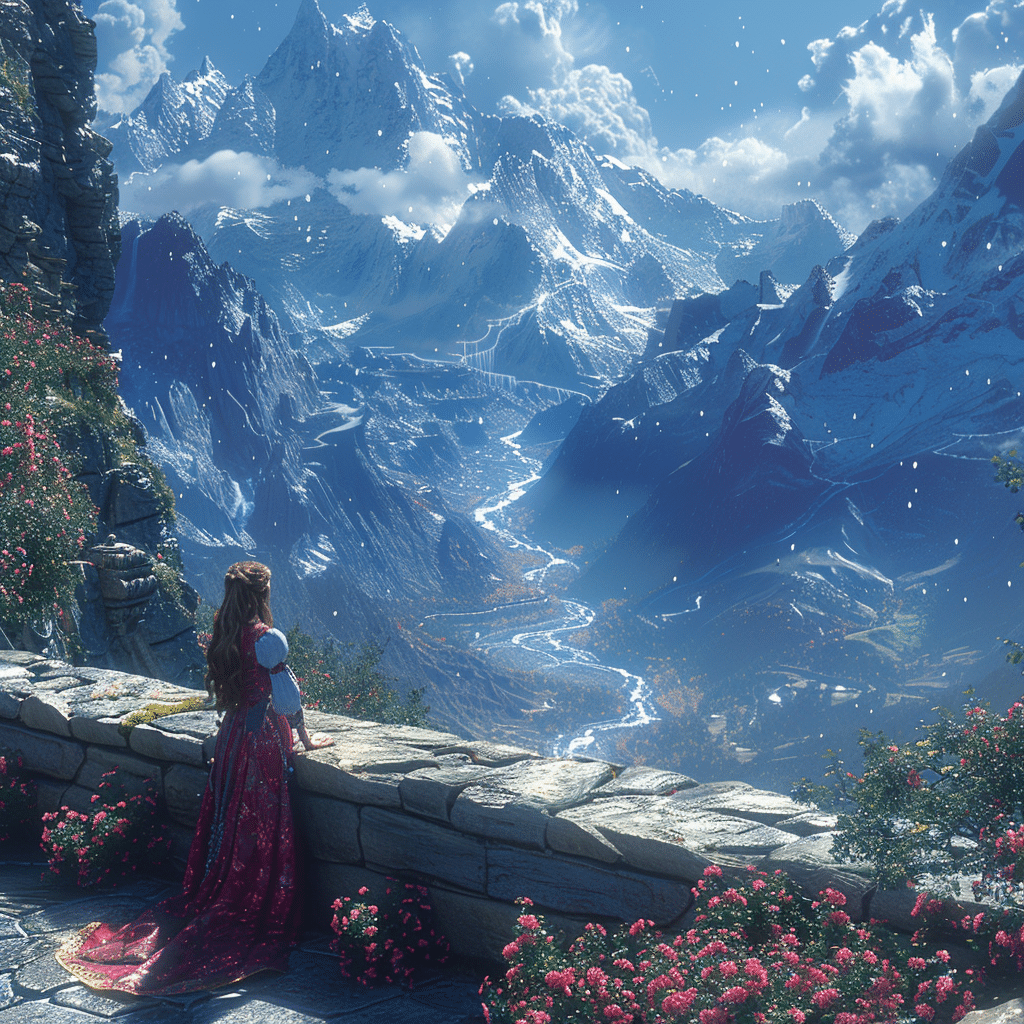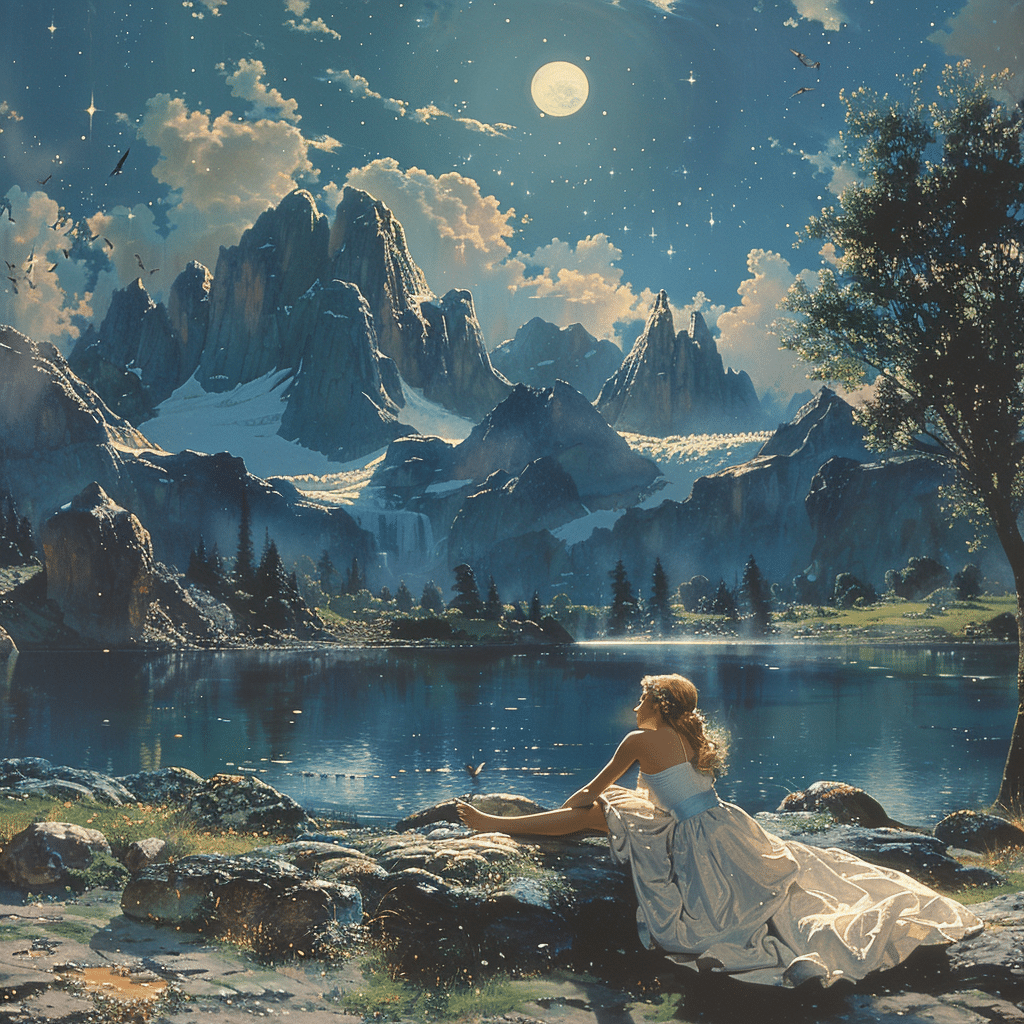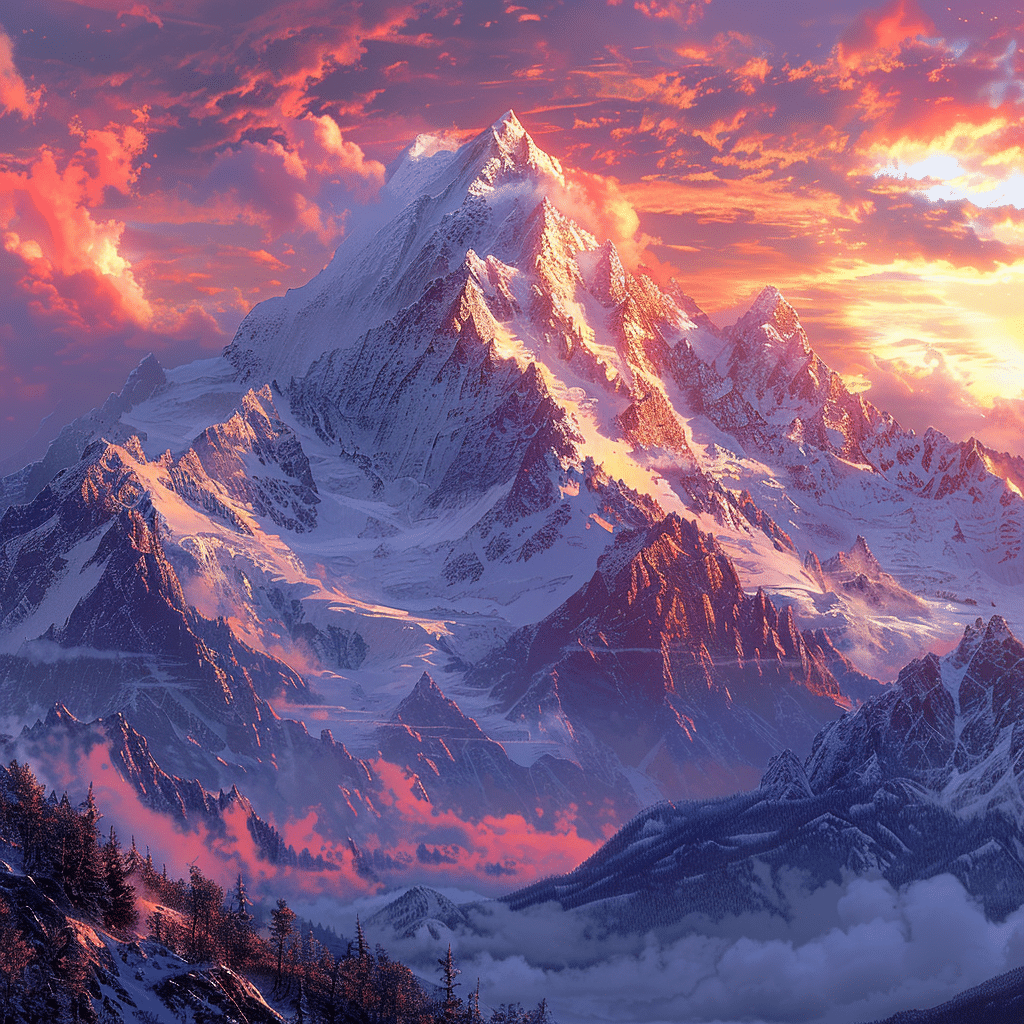The Legend of Sleeping Beauty Everest: Unveiling the Mountain’s Haunting Mythos
Mount Everest, crowned as the ultimate ambition for mountaineers, shelters legends that chill the very air around its peak. Amongst these narratives stands the poignant tale of ‘Sleeping Beauty Everest,’ an epithet that conjures both awe and heartache in equal measure. This is not just a story but a human experience woven into the tapestry of Everest’s unforgiving environment.
The appellation ‘Sleeping Beauty Everest’ has burrowed into the mountain’s lore, resonating with the echoes of those who hear it. The term grew from the tragic odyssey of Francys Arsentiev, whose pursuit of conquest on Everest’s treacherous slopes concluded with her untimely demise. Her peace-like repose near the summit gave life to the moniker that now whispers of the human spirit embattled against nature’s might.
Yet, beyond the whispers lies a visceral reality: a mother’s narrative encapsulated within the frostbitten tableau of Everest’s realm. The Sleeping Beauty Everest not only grips the imagination with its stark reality but also summons memories of sacrifice and the relentless pursuit of dreams amidst the cruelest of elements.
The Historical Echoes of Everest’s Sleeping Beauty
The echoes of the Sleeping Beauty Everest tale harken back to the year 1998—a testament to a determined soul, Francys Arsentiev. Achieving the Everest summit sans supplemental oxygen, her bravery was beyond question, yet it was her descent that would etch her memory into the annals of history. Francys became stranded; her final echoes amidst the crags and snowdrifts a haunting lullaby that would forever resonate across Everest’s slopes.
The impact of Francys’ story reaches deep, touching on the raw essence of ambition and the cost it can exact. Her son, Paul Distefano, bore the brunt of this tragedy in a painfully personal way. Hauntingly, he spoke of the distress he felt upon encountering online images of his mother’s frozen form on the mountain. This wasn’t a mere embarrassment but a profound and private agony thrust into the public’s gaze.
In the years following her death, Francys’ story was retold with both reverence and a somber note, ensuring that her name would not simply fade away among the multitude of Everest’s tales. Instead, the name Sleeping Beauty Everest sounded a reverberating call that stretched far beyond the confines of mountaineering communities.

| Subject Matter | Sleeping Beauty Everest (Francys Arsentiev) |
|---|---|
| Full Name | Francys Distefano-Arsentiev |
| Date of Death | May 24, 1998 |
| Location on Everest | Near the summit, on the northeast ridge route |
| Notability | First American woman to summit Everest without supplemental oxygen, but perished during descent. |
| Nickname | Sleeping Beauty |
| Years Body was Visible | 9 years (1998-2007) |
| Recovery Date | May 23, 2007 |
| Recovery Mission Leader | Ian Woodall |
| Recovery Action | Woodall located and moved the body to a lower location on the face, out of view |
| Personal Impact | Her son, Paul Distefano, was distressed by the visibility of her body in photographs online. |
| Legacy | Her death and the subsequent visibility of her body prompted discussions around the ethics of climbing and the treatment of those who perish on Mount Everest. |
| Green Boots Association | Like “Green Boots,” Arsentiev’s body became a landmark used by climbers for navigation until her body was removed from view. |
| Memorial | After the removal of her body, climbers continue to pay their respects to Arsentiev’s memory and are prompted to consider the risks associated with climbing Everest. |
Green Boots’ Silent Sentinel: A Parallel to Sleeping Beauty Everest
The tale of Sleeping Beauty Everest is paralleled by another enduring Everest fixture—the quiet guardian known as ‘Green Boots.’ The unidentified climber, resting eternally on the Northeast ridge route, serves as a perennial landmark for those braving the ascent. ‘Green Boots’ and Sleeping Beauty are interwoven within the mountain’s legend, embodying the perils that the climb presents and the profound impact left by those who do not return.
Climbers ascending Everest’s towering heights encounter these silent sentinels, compelling them to confront the risks woven into their journey. The high-altitude graveyard, including the haunting site known as Rainbow Valley everest, where colorful down suits of fallen climbers adorn the landscape, adds to the grim mosaic of reminders that Everest does not yield its summits lightly.
Far from being mere waypoints, these figures serve as potent symbols of the mountain’s indomitable nature. They call on climbers to balance their aspirations with a solemn respect for the mountain’s power and to honor the legacy of those who have become part of its mystique.
The Unforgettable Image: Sleeping Beauty Everest Face Photo
A chilling testament to the mountain’s dangers, a photograph capturing the face of Francys Arsentiev—Sleeping Beauty Everest—circulated, offering a haunting view of Everest’s grave risks. Her serene countenance, immortalized amid ice and altitude, became an indelible memory for those who saw it. That single photo bore witness to an array of human experiences—hopes and dreams that ascended towards the heavens, only to culminate in poignant stillness.
Arsentiev’s visage, peaceful and timeless, has been seared into the minds of many, serving as a somber reminder that Everest is not only a monument to human endeavor but also to its limitations. In her frozen gaze, climbers are reminded anew of the importance of preparing for every eventuality, from practicing rigorous pull day Exercises for strength to coupling determination with respect for nature’s disposition.

Tracing the Origins and Evolution of Sleeping Beauty Mount Everest
The lore of Sleeping Beauty Mount Everest compels a near-spiritual reverence, speaking to the contrast between human triumph and the stark, immovable face of nature itself. Each retelling of Francys Arsentiev’s story, from word-of-mouth accounts to articles that trace her last journey, weaves this narrative deeper into the fabric of Everest’s history. These personal odysseys, as they are passed from one generation of climbers to the next, become touchstones for critical discussions around high-altitude ethics, risk preparedness, and the psychological toll of the mountain’s memorials.
Through the decades, as each climber passes by the spot once marked by Arsentiev’s presence, they contribute to a lineage—each footprint a signature, each breath a part of the mythos surrounding her story. The tragedies etched upon Everest’s face are stark, but they also give rise to purposeful debates that could shape the future of climbing on this titan among peaks.
From Myth to Momentum: How the Haunting Tales Influence Modern Climbing
The fateful narratives of Sleeping Beauty and Green Boots have evolved from mere tragedies into potent catalysts igniting conversation within the climbing community. Part of a broader narrative that includes environmental respect and safety on the mountain, these stories underscore the importance of every climber’s responsibilities. They have prompted measures to be taken—one such example being the mortgage loan rates in California—financially securing expeditions towards safer climbs and cleaner trails.
Out of reverence and practicality, there is contemplation over whether to leave these fallen adventurers as part of Everest’s landscape or afford them the dignity of removal from the mountain’s icy grip. Gone are the days when such matters were the subject solely of quiet reflection—today, they stand at the forefront of a dialogue shaping the conscience of climbers worldwide.
Preserving the Echo: The Legacy of Sleeping Beauty on Everest’s Future
In contemplation of the Sleeping Beauty Everest narrative, its resonance is felt beyond a mere chronicle. It has become a profound exemplar of the connection between the infinite spread of the Himalayas and the fleeting spark of human life. As tomorrow’s climbers take up the mantle, the hope stands that they will carry forward the respect that stories like Francys Arsentiev’s demand. Her legacy is an enduring one, bravely offering future generations a stark reminder to respect the mountain and all those who dare its treacherous pathways.
As the chapters of the Sleeping Beauty Everest story proliferate, they echo a mother’s enduring tale across time, evoking the delicate balance between life’s ephemeral nature and the pursuit of its loftiest goals. Each new chapter ensures that as climbers face the imposing ridges of Everest, they remember not just thethrill of scaling new peaks but also the reverence and mindfulness such quests require.
Unveiling the Mysteries of Sleeping Beauty Everest
Where Cinema Meets the Slopes
Now, strap in folks, because we’re about to take a wild sled ride down some trivia slopes you’d never expect to cross paths with the majestic Sleeping Beauty Everest. You might think that Sydney Sweeney, known for her stellar roles in various Movies And TV Shows, wouldn’t have much in common with a colossal mountain. Yet, just as Sydney has climbed the heights of Hollywood, countless adventurers dream of scaling the icy zenith that is the Everest, their silhouettes etching stories against the sky—talk about an Oscar-worthy canvas, right?
Speaking of thespians, did you know the indelible Joan Plowright, a British dame with a career as towering as our frosty subject, shares a connection with these great peaks? Her storied journey on stage and screen, easily found here, echoes the perseverance and grandeur climbers must embrace to conquer the Sleeping Beauty Everest’s formidable embrace. Similarly, each holds their audience—be it wrapped in layers of snow or rapt in a darkened theater—in unwavering awe.
Echoes of Laughter and Legacy
And in this corner of natural wonder, it’s not all frostbite and high stakes. Like Mary Grace canfield, whose comic timing brought levity to even the most stone-faced, Everest, too, has its lighter moments. Check out more about Canfield’s legacy here. Believe it or not, laughter ricochets through base camps as climbers exchange tales that rival the hilarity of Mary Grace’s much-loved characters. It’s really something, isn’t it? The way both nature’s grandeur and human creativity can stir up a storm of emotions, from gasps of awe to the warmth of a chuckle.
And hey, just as Canfield left an indelible mark on the world of sitcoms, each climber that lays their boots upon the slopes of the ‘Sleeping Beauty’ pens their own story in snow and ice. No two treks are alike—some are stories of triumph, others of longing glances from the point where they turned back, every single one a testament to the call of the wild that tugs at the heartstrings of brave souls. Gosh, it makes you think—maybe mountains and people aren’t all that different; both full of narratives, waiting for the right moment to burble up and spin a yarn for the ages.

Is The Sleeping Beauty of Everest still there?
Title: The Ethical Dilemma and Emotional Toll of the Remains of Everest Climbers
Who is the son of Sleeping Beauty of Everest?
Mount Everest, the tallest peak in the world, is as infamous for its treacherous climbs as it is for the remnants of tragedy it bears. Among these, the story of Francys Distefano-Arsentiev, known posthumously as “Sleeping Beauty,” is emblematic of the mountain’s darker side. Francys’s son, Paul Distefano, has spoken out about the pain and embarrassment caused by the sight of his mother’s body appearing in photographs online. Francys passed away in 1998 during her descent after reaching the summit, and her resting place on the mountain became known to climbers and the outside world for nearly a decade.
Who was the woman’s body on Everest?
On a mission to grant dignity to those who perished on Everest, a group of climbers led by Ian Woodall undertook a task to remove visible bodies from the mountain. It was on May 23, 2007, that Francys’s body was moved from the path of the climbers. Woodall found her and conducted a respectful ritual before moving the body to a location where it would no longer be visible, thus ending nine years of her unintended memorial.
Who is the famous body frozen on Everest?
Another such haunting landmark was “Green Boots,” a name given to an unidentified climber’s body which served as a macabre waypoint on Everest’s Northeast ridge route. The frequency of such sightings is a chilling reminder of the perils interfaced by mountaineers.
Did they ever find Doug’s body on Everest?
Inquiries abound regarding those climbers who lost their lives on Everest. Among them, questions hover about the fate of Doug Hansen, who died during the 1996 disaster, and Rob Hall, whose last moments were famously documented but whose body remains on the mountain.
Are there still visible bodies on Everest?
The last words of Francys Arsentiev before she became the “Sleeping Beauty of Everest” are not documented, leaving a gap in the personal story that only those who were with her in her final hours may know.
Where is Rob’s body on Everest?
In recent years, the mountain’s landscape of loss has shifted. While efforts are made to remove bodies from the mountain for both respect and safety, some remains are still exposed to the elements and the eyes of those who pass by. As expeditions become ever more popular, the ethical debate surrounding these climbers at eternal rest intensifies.
What were the last words of Sleeping Beauty Everest?
Everest has also been a ground for inspirational feats, notably by Arunima Sinha, the first female amputee to scale Everest, and Santosh Yadav, the first woman in the world to climb the mountain twice.
Is Green Boots still on Everest?
The oldest body found on Everest is believed to be that of George Mallory, who disappeared in 1924 and whose body was rediscovered in 1999. As for the famous individuals who died on Everest, one might think of Scott Fischer, a renowned mountaineer who also perished in the 1996 disaster.
Who is the lame girl who climbed Mount Everest?
The solemn narratives of Everest call for consideration and thoughtfulness both for the courage it takes to embark on such an adventure and for the respect afforded to those who have fallen in their pursuit to stand on top of the world.



